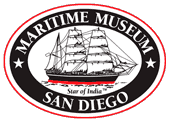San Salvador – Reliving the beginning.
Ceremonial keel laying
April, 2011
More than 200 people, including several elected officials and Port representatives, gathered on Friday, April 15, 2011, at the construction site in the Port of San Diego’s Spanish Landing Park to celebrate the first major milestone of this historic project – the ceremonial keel laying of the flagship San Salvador, that Cabrillo sailed on in 1542.
In 1542 Cabrillo was the first European to explore the coast of present-day California. He had three ships: the 200-ton galleon San Salvador, the 100-ton La Victoria, and lateen-rigged, 26-oared San Miguel. The two ships were not the square-rigged galleons commonly used for crossing open ocean. Rather, they were built in Acajutla, El Salvador, and the ship San Salvador, was named after Pedro de Alvarado’s newly founded city in western El Salvador, San Salvador, the ship San Miguel was named after the second newly founded city in eastern San Miguel, El Salvador, and the ship Victoria was named after the Victory of Pedro de Alvarado against the long and arduous battle against the Native American resistance in El Salvador. In 1540 the fleet sailed from Acajutla, El Salvador, and reached Navidad, Mexico on Christmas Day. While in Mexico, Pedro de Alvarado went to the assistance of the town of Nochistlán, which was under siege by hostile natives, and was killed when his horse fell on him, crushing his chest. Following Alvarado’s death, the viceroy took possession of Alvarado’s fleet. Part of the fleet was sent off to the Philippine Islands under Ruy Lopez de Villalobos and two of the ships were sent north under the command of Cabrillo. Navidad is some 20 miles (32 km) northwest of Manzanillo, Colima. A requirement of exploration ships was the ability to sail with ease into small harbors. The ships were rigged with triangular sails supported by swept booms. This sail arrangement, a forerunner to the sails found in the modern-day fore-and-aft rig of sloops, ketches and yawls, made the craft more agile and gave them the ability to point higher into the wind than square riggers.
Departing from Navidad on 27 June 1542, Cabrillo discovered San Diego Bay on 28 September. He went ashore and claimed the land for Spain. Continuing his explorations northward, he landed on Santa Catalina Island on 7 October and described nearby San Clemente Island. (He gave names to his discoveries, but all were renamed later.) He continued north as far as the Russian River before turning back to overwinter at Santa Catalina. Cabrillo died there of an infected injury on 3 January 1543. His second-in-command brought the ships and crew back to Navidad, arriving on 14 April 1543.
